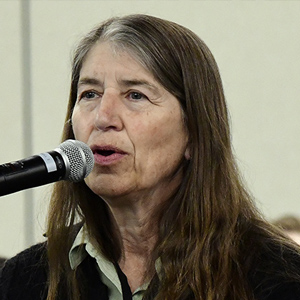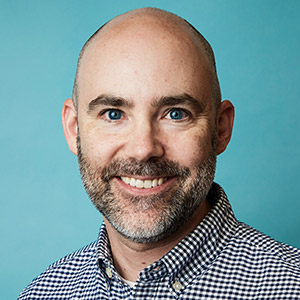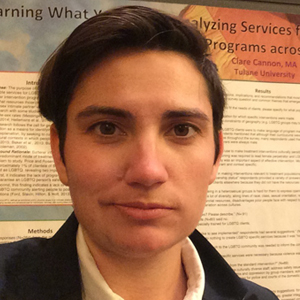NIEHS research grant recipients and state partners convened Dec. 3 for a webinar titled “Wastewater Surveillance — Monitoring COVID-19 to Protect Public Health.” The institute’s Partnerships for Environmental Public Health (PEPH) sponsored the event, which focused on exciting work emerging in wastewater-based epidemiology (WBE).
Town-gown coalitions
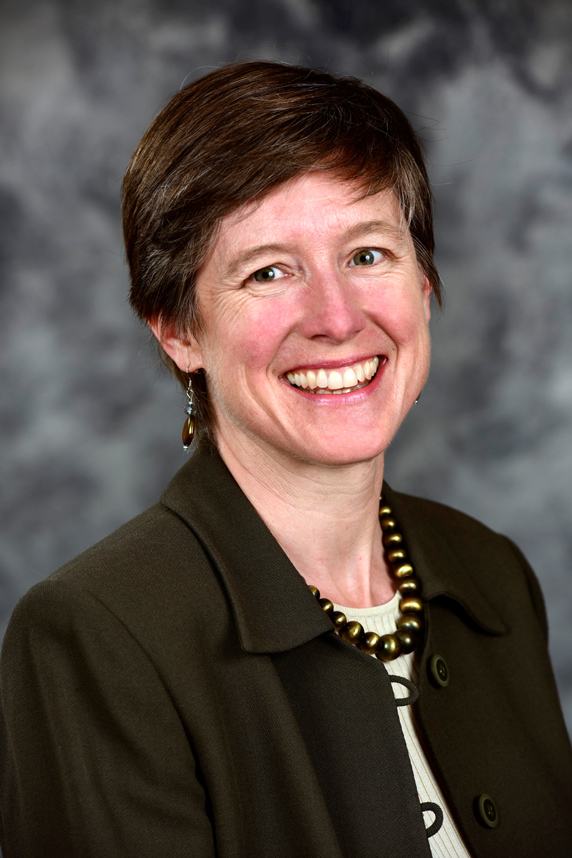 “Data generated by the National Wastewater Surveillance System may help public health officials better understand local trends in SARS-CoV-2 infections, but we need to work with communities to use this information in a way that will help offset disparities,” said Korfmacher. (Photo courtesy of Steve McCaw / NIEHS)
“Data generated by the National Wastewater Surveillance System may help public health officials better understand local trends in SARS-CoV-2 infections, but we need to work with communities to use this information in a way that will help offset disparities,” said Korfmacher. (Photo courtesy of Steve McCaw / NIEHS)Katrina Korfmacher, Ph.D., from the University of Rochester, said that at the start of the pandemic, historically disadvantaged communities in upstate New York were disproportionately affected by the virus.
“We thought wastewater monitoring in communities with low testing rates could counteract inequities in the pandemic response by determining where resources were needed,” she said.
A first step was to develop capacity, understanding, and experience within local institutions. So, Korfmacher helped assemble a coalition of local governments and colleges to sample wastewater.
Results from surveillance of student populations allowed colleges to implement strong public health rules, such as closing in-person instruction, without having to track down individual students for testing.
“Wastewater was a valuable part of our overall testing system,” she told attendees.
Advantages and limitations of WBE
Because the virus can be shed by both symptomatic and asymptomatic people and enter wastewater days before it shows up clinically, daily surveillance data can be used for such things as alerting hospitals of potential increases in patient numbers.
“WBE provides a population snapshot at a fraction of the cost of clinical testing, and we see the same trends,” said Virginia Guidry, Ph.D. She heads the Occupational and Environmental Epidemiology branch in the North Carolina Department of Health and Human Services, which oversees the state’s wastewater surveillance program.
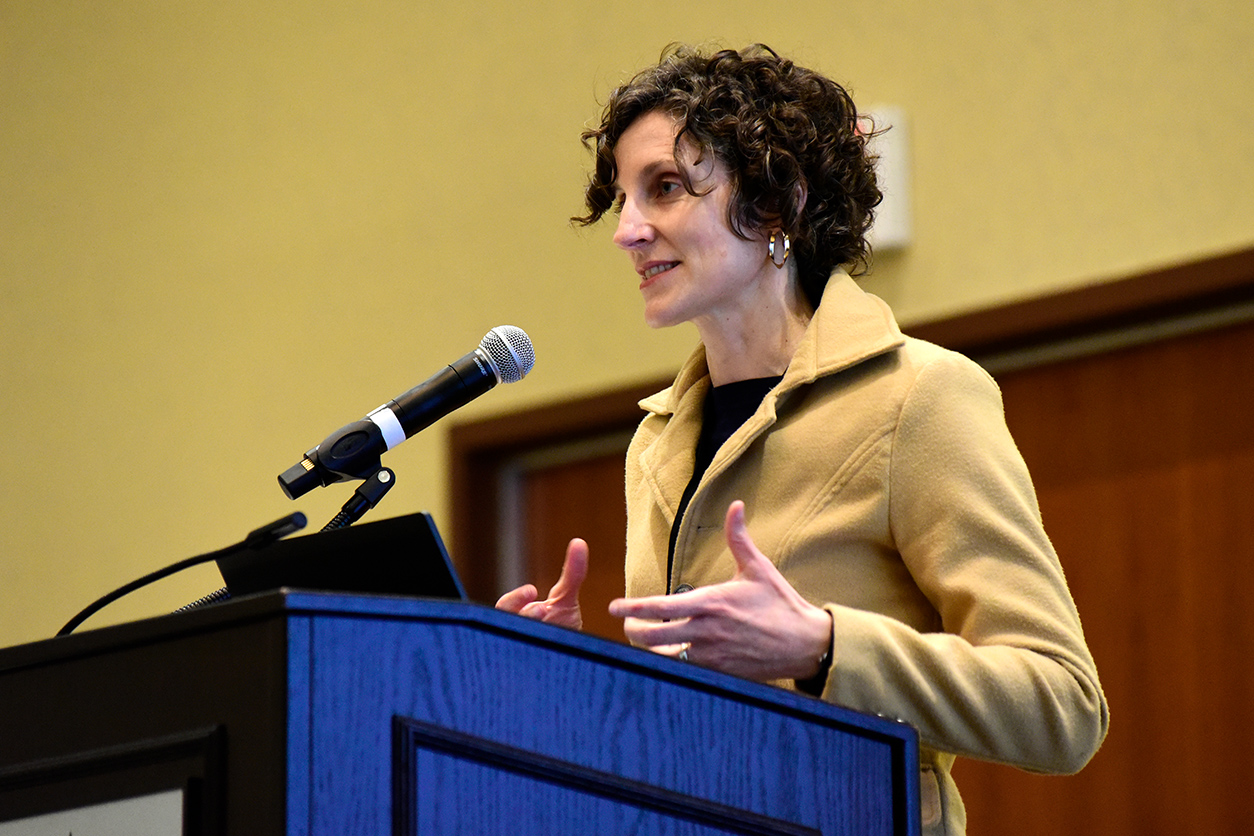 “Wastewater surveillance is an important tool in our outreach efforts,” said Guidry, shown here at a 2020 PEPH meeting. (Photo courtesy of Steve McCaw / NIEHS)
“Wastewater surveillance is an important tool in our outreach efforts,” said Guidry, shown here at a 2020 PEPH meeting. (Photo courtesy of Steve McCaw / NIEHS)The North Carolina Wastewater Monitoring Network is part of the National Wastewater Surveillance System, which is an emerging tool for tracking the COVID-19 pandemic.
However, WBE has limitations, according to Guidry. For example, it can only be implemented efficiently in areas with wastewater sewage systems, and in rural North Carolina, 40% of the population are on septic systems.
Also, although the approach enables researchers to measure viral load, how that translates into numbers of infected persons is not clear. Finally, in regions with transient populations, such as the touristed areas of mountain and coastal North Carolina, it can be hard to accurately assess what is going on locally.
Overcoming rural challenges
On the other side of the Appalachians, James Keck, M.D., from the University of Kentucky, is trying to fill in those rural knowledge gaps.
He spoke about Wastewater Assessment for Coronavirus in Kentucky: Implementing Enhanced Surveillance Technology (WACKIEST), a project exploring the feasibility of wastewater surveillance in rural populations where clinical testing is limited (see sidebar).
 “We are testing at wastewater treatment plants that serve populations from five to 25,000 people,” said Keck. (Photo courtesy of James Keck)
“We are testing at wastewater treatment plants that serve populations from five to 25,000 people,” said Keck. (Photo courtesy of James Keck)Keck and his partners have developed a mobile lab that makes research techniques simpler and more field-friendly, and the team partners with a group called Watershed Watch, which collects samples from local creeks and rivers.
“We also are experimenting with stream surveillance because in our rural populations, many homes are not connected to centralized sewer systems and instead use septic tanks or have what we call straight pipes, meaning that sewage is dumped directly into the environment,” said Keck. “Our proof-of-concept experiments demonstrate the feasibility of environmental viral surveillance for other locations that lack centralized sewage systems,” he added.
“By sampling populations, wastewater-based epidemiology complements individual clinical testing,” noted Keck. “We don't rely on people either choosing to get tested or having access to testing, so we aren't missing pockets of the community.”
Early work pays off
 “It took a pandemic to move the needle on wastewater surveillance,” Halden said. (Photo courtesy of Rolf Halden)
“It took a pandemic to move the needle on wastewater surveillance,” Halden said. (Photo courtesy of Rolf Halden)Rolf Halden, Ph.D., from Arizona State University (ASU), has performed pioneering work with wastewater for more than 20 years. His team developed the world’s first open access dashboards for tracking opioids and SARS-CoV-2 — the virus that causes COVID-19 — in municipal sewers. The researchers also created the first U.S. wastewater monitoring network for influenza and other viral diseases. In the U.S., use of wastewater to screen for pathogens dates back as far as 1935, when poliomyelitis viruses were isolated from sewage, he told attendees.
NIEHS-funded wastewater sample collection began at ASU in 2006 and helped to bring about a U.S. Food and Drug Administration ban on risky antimicrobials such as triclosan and triclocarban, according to Halden. Related efforts also led to the establishment of the ASU Human Health Observatory, which is a shared resource identified in 2019 as the largest archive of wastewater samples in the world.
He touted the early warning capabilities of WBE.
“Soon, we will be able to investigate virus clusters in larger fractions of the population so that expensive clinical testing can be surgically applied to contain health crises,” said Halden. He noted that wastewater-based SARS-CoV-2 screening is almost 99% less costly than random clinical testing.
(John Yewell is a contract writer for the NIEHS Office of Communications and Public Liaison.)






